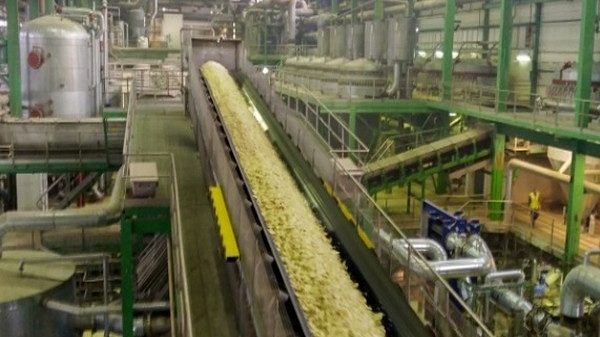Today is World Biofuels Day, and over the past week there has been a lot of discussion on social media about biofuels, particularly ethanol. This renewed interest follows Petroleum Minister Hardeep Singh Puri’s announcement that India has achieved its ethanol blending target of 20 percent, known as E20 petrol, five years ahead of schedule.
However, many social media users have raised concerns about ethanol blending, including reduced fuel economy and potential engine damage. In a post on X, the Ministry of Petroleum and Natural Gas shared a 2022 column of mine on the subject for context.
I will admit that my views on ethanol blending have evolved over the past three years. While I still believe certain issues need to be addressed—such as pricing and availability—overall, ethanol blending and even Compressed Biogas (CBG) are essential for India’s energy security, especially since we still import over 85 percent of our crude oil and just under 60 percent of our natural gas requirements.
Anti-ethanol arguments ‘rubbish’
A couple of days ago, I shared a stage with Puri and interacted with multiple stakeholders in the ethanol ecosystem, including automakers, distillers, and think-tank experts, at an event marking World Biofuels Day. One long-standing criticism of ethanol is that it comes from water-intensive crops such as sugarcane. Puri, who once served as India’s ambassador to Brazil—the pioneer in ethanol blending—pointed out that this is not a problem for Brazil because it has a vast land area and over 22 percent of the world’s freshwater resources.
“But the fact is,” Puri told me, “that as ethanol production has grown in India, most ethanol now comes not from sugarcane juice but from by-products of sugarcane processing such as B-heavy and C-heavy molasses. In addition, we use broken, damaged, and surplus foodgrain.” The minister added that second-generation ethanol production from products like bamboo is already taking place in Assam, and new start-ups are exploring ways to convert seaweed into ethanol.
“So, the arguments around food security and water wastage are utterly rubbish. Also, we were producing surplus foodgrain and using Indian taxpayer money to subsidise exports of products like sugar. That is not happening now. A bulk of the savings from reduced crude oil imports is now being transferred to Indian farmers, who have gone from being annadatas to urjadatas.”
Also read: Ethanol blended fuel to power vehicles. Will it hurt your car’s engine?
Car damage, fuel efficiency?
What about concerns over vehicle damage and reduced fuel efficiency? Most carmakers are clear that all cars sold in India, including imported luxury and performance models, are tuned to accept E20 fuel. The loss in fuel efficiency, despite ethanol’s lower energy density compared to petrol, is around 1–2 percent, as backed by a 2021 NITI Aayog expert committee report. However, older vehicles—especially those sold before ethanol blending gained momentum under the Narendra Modi government—may see a 5–7 percent drop in efficiency and potentially corrosive damage to plastic and rubber parts. Puri said these concerns are overstated and often the result of lobbying.
While Puri did not say the government plans to increase ethanol blending beyond E20 at petrol pumps, he noted that pure ethanol (E100) is now available at 400 petrol stations across the country (out of around 88,000). However, most modern petrol-tuned vehicles cannot run on blends higher than E20 without significant modifications to become “flex-fuel” vehicles, as in Brazil, where cars can operate on a wide range of blends. The Petroleum Ministry is subtly promoting the idea of India’s energy independence through biofuels, and as more E20-capable cars enter the fleet and older vehicles are scrapped, ethanol blending issues will gradually dissipate.
A senior auto industry executive told me the ideal scenario for India would be a “baseline” of E20 petrol, with consumers free to choose higher or lower blends.
“If there is some differential pricing to account for the lower calorific value of ethanol, this will help in adoption. In heavy urban traffic, fuel economy losses will be marginal, and with strong or plug-in hybrid flex-fuel vehicles, losses would dissipate completely.”
Beyond biofuels—CBG, CNG
But biofuels go far beyond ethanol. The government’s big push now is for Compressed Biogas (CBG), which will be blended into Compressed Natural Gas (CNG). Unlike ethanol, CBG and CNG are chemically identical. The target is for CBG to make up 4 percent of CNG by 2030.
“India has a huge amount of biomass, and it makes sense to use it for energy production. India’s energy needs are increasing dramatically year-on-year, and we should be using this to make energy,” Vibha Dhawan, Director-General of The Energy and Resources Institute (TERI), told me.
In fact, according to a presentation by Maruti Suzuki, CBG—if properly accounted for—actually removes carbon from the atmosphere, since rotting biomass would otherwise release methane, a deadlier greenhouse gas than carbon dioxide. Capturing and burning it as vehicle fuel is a win-win, although Dhawan acknowledged there are still scalability issues and questions about how to handle the by-products. Maruti Suzuki is working with the National Dairy Development Board (NDDB) to find solutions, and CBG is likely to make headlines in the coming months.
The biofuels story doesn’t end there. Puri also revealed that the IndianOil refinery in Panipat can now process used cooking oil to produce Sustainable Aviation Fuel (SAF).
“Going forward, more and more planes will run on a blend of SAF and conventional aviation fuel. This is a far more ecological use of used cooking oil,” Puri said.
Kushan Mitra is an automotive journalist based in New Delhi. He tweets @kushanmitra. Views are personal.
(Edited by Prashant)





The sugarcane argument is strong. Because significant amount of sugarcane is grown in Vidarbha where farmers are ending their life due to drought. Move sugarcane to Bihar, which is flooded all the time.
My gut feeling is that this initiative will remain a flop. This is too much to handle for socialist India